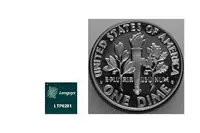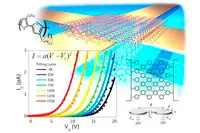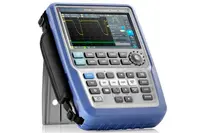Electronics News
Archive : 5 January 2016 год
 Longsys Technology has used CES in Las Vegas to announce what it says is the smallest IoT WiFi silicon in package (SiP) module. The LTP0201 is designed for use in IoT and wearable devices that can connect to other smart devices or connect directly to the Internet.
Longsys Technology has used CES in Las Vegas to announce what it says is the smallest IoT WiFi silicon in package (SiP) module. The LTP0201 is designed for use in IoT and wearable devices that can connect to other smart devices or connect directly to the Internet.
Measuring 6 x 6mm, the module integrates a 32bit RISC MCU, SRAM, SPI NOR flash, power management and RF parts, to provide a high performance, low cost, and low power consumption solution for connected products.
The part, which enables IEEE802.11b/g/n communications, has an integrated TCP/IP protocol stack and supports 1x1 MIMO. It takes just 2ms to wake up and transmit packets, whilst standby power consumption is said to be less than 1mW in DTIM3 mode. For security, it integrates WEP, TKIP, AES, and WAPI HW secure engines.
Longsys has also announced the LTP3226, a WiFi and Bluetooth combination SiP. Along with the features available in the LTP0201, this device integrates Bluetooth 4.1/BLE functionality.
Longsys’ general manager Dave Pang said: “In five years, more than 60% of IoT and wearable products will incorporate SiP modules because of their size and more consistent RF performance.”
Author
Graham Pitcher
Source: www.newelectronics.co.uk
 In experiments, a team of researchers from Osaka University claims to have detected Coulomb blockades in two dimensional organic conducting polymer films. The group says its work could change the conventional understanding of organic conductors and help in the design of organic and molecular devices, such as single-electron transistors or a memory in which information is stored by just a few electrons.
In experiments, a team of researchers from Osaka University claims to have detected Coulomb blockades in two dimensional organic conducting polymer films. The group says its work could change the conventional understanding of organic conductors and help in the design of organic and molecular devices, such as single-electron transistors or a memory in which information is stored by just a few electrons.
Previously, it was thought that Coulomb blockades only occurred in inorganic materials at extremely low temperatures. However, the team not only showed that it can take place in organic materials, but also that Coulomb blockades can affect conductivity at room temperature.
The researchers, led by Assistant Professor Megumi Akai-Kasaya and Professor Yuji Kuwahara, created a sheet of two-dimensional films of regularly arranged hexylthiophene monolayers. The sheet was then attached to an electrode with a gap of less than 1µm and its electrical conductivity was measured. The current flowing through the film was found to be temperature dependent over temperatures ranging from 4K to 150K and to vary according to the charge on the electrode and the thermal energy of the system. The team also found the effect produced a temperature dependent threshold voltage.
The group claims it theoretically verified the Coulomb blockade in the organic thin film through the delocalisation of electric charge and the distribution of conductivity in the two-dimensional film.
Pic: Coulomb blockade currents measured in a conducting polymer monolayer and a 2D charge transport model. The background shows a schematic of the monolayer on the electrodes.
Author
Tom Austin-Morgan
Source: www.newelectronics.co.uk
 Rohde & Schwarz has launched its first handheld oscilloscope and claims the device – called Scope Rider – has the functionality and touch and feel of a state of the art lab device.
Rohde & Schwarz has launched its first handheld oscilloscope and claims the device – called Scope Rider – has the functionality and touch and feel of a state of the art lab device.
Scope Rider integrates five instruments in a rugged housing. It features isolated input and communications interfaces, meets CAT IV standards and can carry out measurements on low voltage installation sources up to 600V.
The device, which features a 10bit A/D converter, is based on a high performance oscilloscope featuring a precise digital trigger system, 33 automatic measurement functions, mask test and XY diagram mode. It can also function as a logic analyser with eight additional digital channels, as a protocol analyser with trigger and decoding capability, as a data logger and a digital multimeter.
A large format capacitive touchscreen allows it to be operated intuitively, whilst a multifunction wheel is included for parameter adjustment. Up to 50,000 waveforms per second can be acquired.
The Scope Rider is available in two and four channel variants, with the former featuring a digital multimeter. Both units are available with bandwidths of 60, 100, 200, 350 and 500MHz and the company says trigger and decoding options will be available for I2C, SPI, UART, RS232, RS422 and RS485.
Author
Graham Pitcher
Source: www.newelectronics.co.uk

